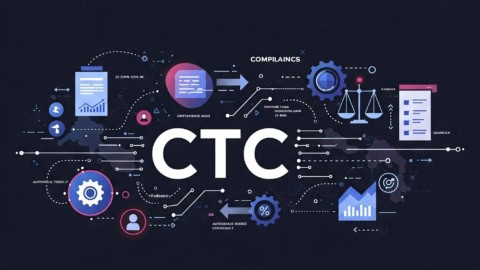🔍 TL;DR summary
- Manual compliance methods don’t scale and often lead to audits, delays, and IT bottlenecks
- Real-time tax mandates require integrated workflows, connecting ERP data, automation, and technical compliance.
- A scalable setup should enable visibility, repeatable rollouts, and proactive error handling across all countries.
- Fully managed platforms like ecosio’s reduce risk and effort, keeping businesses compliant as mandates evolve.
With e-invoicing mandates accelerating and more and more countries introducing new requirements every year, e-invoicing compliance is becoming a constant challenge.
But the real issue isn’t just the rules, it’s how most businesses try to meet them. Manual workarounds, local tools and support queues may get the job done once, but they don’t scale. They add friction, increase audit stress and inhibit growth.
In this article, we’ll explore:
- Why common approaches to compliance fall short
- What to look for in a scalable e-invoicing setup
- Practical strategies to reduce effort and risk, without starting from scratch every time
- How real-time mandates and tax reporting are reshaping what “compliance” really means
Why traditional compliance setups no longer cut it
E-invoicing compliance sounds simple: understand the rules, send the right format, store the invoice. Done. In practice, it’s anything but.
Most businesses face:
- Constantly evolving local requirements
- Disconnected systems and unclear ownership
- Manual steps and one-off integrations
The result?
- Missed deadlines
- Time-consuming audits
- Reactive rollouts that drain IT and finance teams
And as more governments adopt continuous transaction controls (CTCs), which require invoice data to be sent to tax authorities in real time, legacy systems simply cannot keep up.
E-invoicing, automation and tax reporting are no longer separate
In the past, tax, IT and electronic data interchange functions operated in silos. But those boundaries are disappearing fast.
Today’s compliance requirements go beyond invoicing. Governments increasingly want real-time visibility across entire transactions, from purchase order, to delivery, to invoice. In many countries, mandates already include waybills or purchase orders, and more are coming.
To meet these expectations, businesses need a connected approach that brings together:
- ERP data (e.g. tax rates, line items, delivery terms)
- Workflow automation (e.g. invoice validation and routing)
- Technical compliance (e.g. formats, protocols, audit trails)
That’s why many companies are now rethinking their architecture to reflect the growing convergence of compliance, automation and tax mandates.
Is your e-invoicing setup built to scale?
Before investing in new tools or processes, it’s worth taking a moment to assess how well your current setup is serving you.
Ask yourself:
- Can we track every e-invoice from creation to delivery in one place?
- Are new countries easy to add, or does each rollout feel like a standalone project?
- Is our data stored in an audit-ready format, consistently?
- Do we support both post-audit and real-time (CTC) models?
- How quickly can we adapt if a partner or government changes the rules?
If any of these questions raise doubts, it may be time to rethink your approach. A truly scalable solution should make it easy to stay compliant, no matter how fast mandates evolve.
A practical example: moving from patchwork to platform
Let’s take a fictional but familiar scenario…
The challenge: a European enterprise operates in Germany, Poland and Romania. Each country requires different formats, submission methods and archiving rules. The company uses a mix of manual uploads, local platforms and email-based approvals. Audits are painful, and expanding to new countries feels overwhelming.
A smarter setup would:
- Connect directly to the ERP system
- Route all e-invoices through a central platform
- Automatically apply country-specific validation rules
- Store messages in an audit-ready format
- Allow new countries to be added via configuration, not development
With this approach, compliance becomes part of the process, not a roadblock.
What a scalable e-invoicing setup should look like
Businesses succeeding in this space aren’t doing more; they’re doing things differently. Their setups scale by design and rely on more than just software.
A truly scalable e-invoicing solution should combine powerful automation with ongoing expert support. It’s not enough to have the right tool. You need a partner that monitors, maintains and resolves issues in real time.
Here’s what to aim for:
Centralised visibility
Can you quickly find out where a message is, what rules apply or what was sent last month? A scalable system gives you full access to message flows, compliance data and audit history in one place.
Repeatable rollouts
Each new country shouldn’t feel like a new project. Look for consistent setup flows, predefined country profiles and clear documentation, supported by a team that knows the mandates inside and out.
Built-in flexibility
Can your system adapt to different formats, delivery channels and compliance models without rewriting everything? The ability to handle variability without extra work is key.
Proactive error handling
When something goes wrong, such as invalid formats, failed transmissions or partner mismatches, who fixes it? In a fully managed setup like ecosio’s, errors are caught and resolved before your team even notices. That means fewer tickets, faster resolution and greater peace of mind.
How ecosio enables seamless, future-ready e-invoicing operations
E-invoicing isn’t static, and your solution shouldn’t be either. At ecosio, we continuously adapt our platform in line with emerging mandates and real-world customer needs, so your business stays compliant and efficient without disruption.
Here’s are just some of the ways that commitment has translated into everyday value in the past few months alone:
- You get full control and visibility across your message flows, with real-time access to compliance data, audit-relevant fields and documentation all in one place
- You can expand into new markets faster, thanks to guided, self-service onboarding for countries like Hungary, Poland and Romania that don’t rely on support tickets
- You stay audit-ready without additional prep, as validated invoices are automatically routed to your ERP or archive, already formatted and complete
- You can meet partner-specific requirements with ease, including delivering multiple attachments or handling differing format expectations without manual intervention
- You stay compliant with Germany’s new e-invoicing rules, allowing structured invoices to be sent by email without the need to manually monitor an inbox.
And because ecosio’s Global E-invoicing Compliance solution is fully managed, these capabilities evolve continuously in the background so your teams can focus on growing the business, not chasing compliance.
Final thoughts on turning e-invoicing compliance into a strength
E-invoicing compliance isn’t just a box to tick. It’s a chance to gain control, reduce complexity and move faster across borders.
With the right setup, you can:
- Expand into new markets faster
- Align IT, finance and tax teams
- Stay ready for audits without added effort
- Focus on what drives business, not paperwork
The key is building a system that works for every country, not just the next one. If you’re still getting to grips with real-time mandates, this overview of continuous transaction controls (CTCs) breaks down how they work, what they require and how to prepare for them effectively.
Stay ahead with monthly e-invoicing updates
With international e-invoicing mandates evolving rapidly, staying compliant has never been more important.
To help you stay informed, ecosio’s Product Owner for International E-invoicing, Amy Vahey, hosts a new monthly e-invoicing update video series. Each episode delivers a clear, concise overview of the latest regulatory changes, perfect for businesses expanding into new markets or keeping track of existing requirements.
Watch the latest video now and subscribe to our YouTube channel for instant access to future updates.
Alternatively, if you prefer to stay up-to-date via email, we also run a bi-monthly email “E-invoicing Updates” newsletter!
























